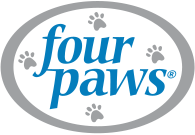How to Potty Train an Older Dog
Despite the age difference, potty training an adult dog is similar to potty training a puppy. Both processes require patience and persistence as your furry friend learns where and when to relieve themselves. Potty training an adult dog might simply take longer because your fully grown dog will fight old habits while learning new ones.
Potty training an adult dog can take time, but it’s an adventure that’s well worth the effort. It can virtually eliminate indoor accidents, and the training process will help you strengthen your relationship with your dog.
Follow the strategies below for tips that can help guide your potty training process.
Determine the Cause
Several potential causes may explain why your adult dog is having indoor accidents. Aside from a lack of potty training, your pooch could be experiencing dog incontinence—which happens when they involuntarily lose control of their bladder. Your dog might also have separation anxiety, a heightened sense of stress or panic caused by separation from you or another caregiver.
Before you begin with any sort of formal training, take steps to identify the root cause of your dog’s indoor accidents. If you believe your dog’s issues might have a medical cause, be sure to consult a licensed veterinarian for a diagnosis and treatment plan.
Focus on Crate Training
Crate training can be a surprisingly important step when potty training your adult dog. While many dogs will go potty in inappropriate locations around the home, they typically will not soil their bed. If you can teach your pup to use a crate for nighttime sleep and daytime lounging, you’ll help eliminate accidents and promote appropriate potty time.
Crate training your dog isn’t a one-day process. Like any other training method, you’ll need to exercise patience and perseverance before your dog begins to warm to their crate.
Introduce your furry friend to their crate at a comfortable pace, allowing them time to become familiar with the crate before training begins. Leave your dog in their crate for a few minutes at a time before lengthening these periods and practicing during nighttime hours.
Your dog’s overall health and wellness also benefit from successful crate training. Crate training helps dogs of all ages develop den instincts and enjoy a comfortable, private space. Crates also serve as important outlets for overly excited dogs, giving them a non-destructive way to manage their emotions.
Go Outside Frequently & Consistently
One popular way to limit your pet’s household accidents is simply to take them for potty breaks more often. Regular bathroom breaks can help decrease the frequency of your dog’s accidents, as long as they have enough time to "go.”
At regular intervals during the day, take your furry friend outside for a safe, leashed dog walk. Align these walk times with periods during the day when your dog might have an accident. You might want to consider taking your dog for a walk immediately after they wake up, before or after a meal, and right before bedtime.
If you know your four-legged friend is going to meet someone new, taking them for a break can also decrease the chance they accidentally go potty out of excitement.
Use Positive Reinforcement
When you’re potty training an adult dog, positive reinforcement can go a long way toward supporting your instructions. During the training process, positive reinforcement helps your dog focus on repeating positive actions instead of avoiding negative ones. It will help you establish a bond with your adult dog, one built on trust and encouragement.
By contrast, try to stay away from punishment, which disciplines unfavorable actions. Even if you’re simply raising your voice at your dog’s accidents, punishment can teach your pet to fear your reaction. Over time, they may come to fear you as well.
Look for Signs Your Dog Has to Go Potty
No matter their age, every dog communicates with their pet parent. It’s up to you to learn your pooch’s messaging and interpret their intentions. Your dog might have indoor accidents because you have missed the signs their bladder is full.
Common signs your dog needs to go potty include:
- Crying or whining
- Standing next to or scratching the door
- Trembling or shaking
- Pacing in circles
- Standing in front of you expectantly
Teach Your Dog to “Ask” for a Bathroom Break
You may also be able to teach your dog to inform you when they need a bathroom break. Some dog trainers have successfully taught their pets to ring a bell, tap a button, or sit patiently by the door whenever a bathroom break is needed. As long as your adult dog is receptive to this type of training, you should be able to do the same.
Training your dog to use a bell, button, or other bathroom indicator can take time. Like crate training, first allow your furry friend to sniff or inspect the device you’ve chosen. Once they become familiar with the object, place it by the potty spot. Every time you take your dog to go potty, trigger the device (e.g., ring the bell or tap the button). This repeated action will allow your dog to develop a strong association between the action and the bathroom break.
Keep triggering the device until your dog begins to do the same. When your dog does activate the device, shower them with positive reinforcement and immediately take them outside.
Be Patient
Housetraining an adult dog takes patience. Particularly for dogs with an established history of going potty anywhere they please, housetraining can feel like an uphill battle. With time, you’ll notice even the most stubborn adult dog will begin to obey your training.
Expect your four-legged friend to have accidents during the housetraining process. To mitigate these issues, many dog trainers proactively teach their dogs to use training pads. Sometimes called housebreaking pads or potty pads, they’re absorbent, easy to use, and can help drastically reduce the number of accidents.
When choosing the training pads that best suit your dog, you’ll want to prioritize products that provide strong absorption, coverage, and odor control. These pads are often manufactured to accommodate dogs of all sizes, so make sure you choose the size that best fits your pup.









